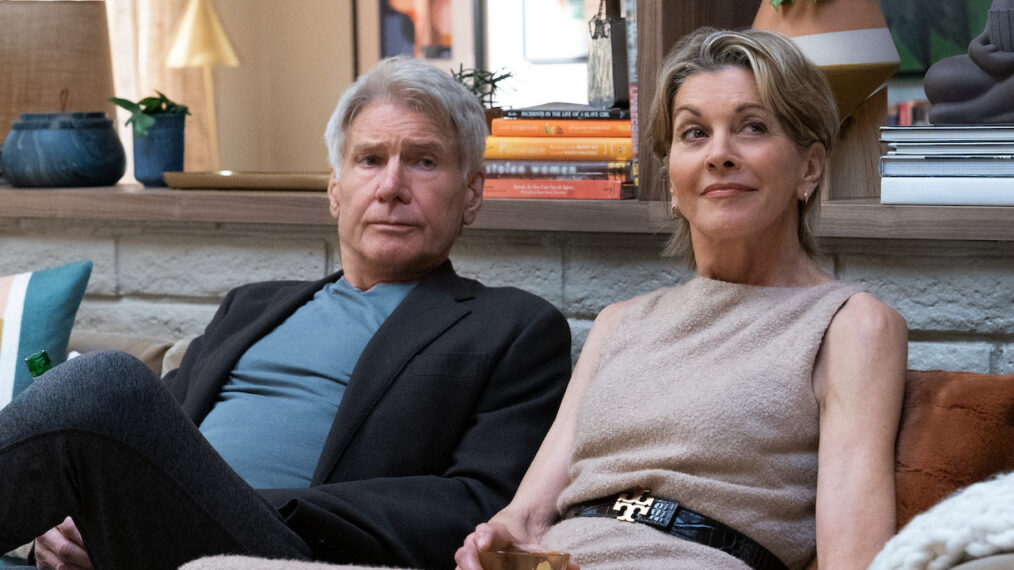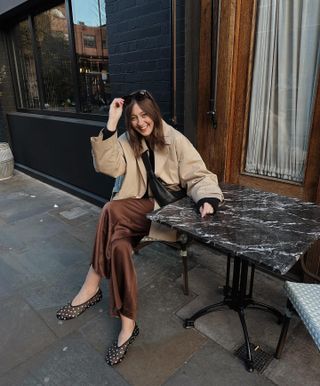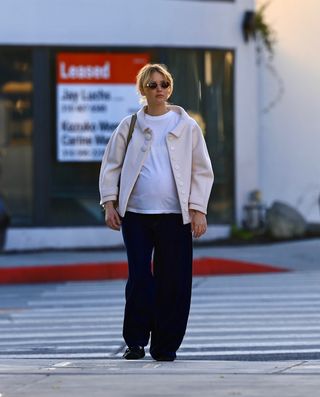
The mid-2000s were a weird time for Rob Zombie as the rocker was attempting to navigate the world of being a double-threat entertainer. His directing career was starting to show promise while the rock world that had embraced him over the past decade-plus was waiting for some new music.
Admittedly, Zombie wasn’t in the best headspace following his band’s touring for 2001’s The Sinister Urge. He told The Boston Globe, “My future is in movies. The music is dwindling down, because you can’t do both. There’s just not enough time in your life. If you try to do both, both will suffer. So you’ve got to make the choice. … and it’s a new challenge. I’ve been doing music nonstop for 20 years. I’m just fired up about movies.”
Zombie had attempted to start a new album, but quickly stopped when he wasn’t feeling it. He told Audiohead, “It’s not that the stuff from way back sounded old — it’s just that I wasn’t in the groove back then because my head was on the movie [The Devil’s Rejects] After I went on Ozzfest with a new band — that’s when I got back in the groove to do music.”
Rob Zombie, “Dragula” — Live at Ozzfest (2005)
Some fresh blood was needed and Zombie found that in the form of Marilyn Manson guitarist John 5, who joined the touring lineup in 2005 and began to work with Zombie and his collaborator Scott Humphrey on songs for the new album. “I have a new band and John 5 has been very instrumental because he’s the best guitar player I’ve ever worked with,” said Zombie to Audiohead at the time. “For me, that was always the missing link — never really having that great guitar player to work with.”
Likewise, John 5 was thrilled to be in the new creative environment. “It is a true honor, especially when you truly look up to someone and appreciate what they do and love what they do, and to be part of that history of Rob Zombie is such a great honor. I have so much respect for him, and the work he has done, it is just an incredible feeling to know that I am going to be a part of that, as well as such a fan throughout his career.”
After enjoying a run on Ozzfest 2005, Zombie felt rejuvenated musically. “I’m back,” he emphatically stated in a post Ozzfest update. “Ozzfest is over and it was a total blast! It was really great to get back out there on the road and see you all again. The new band is amazing and we are dying to get back into the studio and finish the new album. I am positive this this is going to be the most kick-ass record yet. Blasko, [John] 5 and Tommy [Clufetos] are ready to crush it and so am I.”
And so the work on what would become the Educated Horses album began in. It was a different process for Zombie, who revealed that the band had around 25 songs for the album, something he considered an excess since most of his previous work consisted of just solely what appeared on albums. He told Launch Radio Networks, “This time there’s a lot more songs, they’re more varied in style and vibe and sound, but the main thing is, all of it is live band work. There’s no computer-generated things. That I’m not doing this time.”
Rob Zombie on Jimmy Kimmel Live! (2006)
The album, recorded at Los Angeles’ Chop Shop Studios, had a more raw and live feel, steering away from some of the industrial sounding programming and pulling influences from more glam rock artists like Slade, T. Rex and Gary Glitter. “The record is stretched out in a different area than Rob has done before,” explained drummer Tommy Clufetos to Glam-Metal.com. “Heavier, lighter, it is great that people dig it. It still has the Zombie thing, he has his own style. Nowadays, there are so many of those horror rock bands, which Rob was so monumental in creating and influencing some of those bands. He stepped away from that on this last record, to show it is just about the music. I think that came across on the record and I was proud to be a part of it.”
Zombie told Launch that was thrilled for some variety. “I just wanted to do something different,” he said. “I’ve sort of had a new philosophy, also with music, to do the exact opposite of what I would normally do. You know, maybe some people will be, like, pissed off because it’s not what they expect, but I just think that once music starts becoming like you’re a Vegas performer … you know, you don’t ever want to be like Barry Manilow at the Sands — ‘Oh, let’s do ‘Copacabana’ again.'”
In addition to the core of Zombie, John 5, Blasko, Clufetos and multi-instrumentalist / producer Scott Humphrey, Zombie brought in some guests. Drummer Josh Freese sat in on some material before Zombie had put his band together. Motley Crue’s Tommy Lee provided some additional drumming as well.
And on March 28, 2006, Zombie was finally ready to unleash his third album, Educated Horses, to the masses. As for that unique album title, Zombie stated, “It was a weird kind of phrase, like, that I remembered as something as a kid. You know, my parents, my grandparents, my aunts and uncles, the whole family, were involved in carnival business and, like, circus business, so as a kid, we would get dragged to these things, and we’d have to spend all this time there. And that was just one of the attractions I remember, what they would call the trained animals, you know, educated horses.”
The first new song to come from the album and the disc’s biggest hit was a track called “Foxy, Foxy.” The track found Zombie venturing into more funky territory, with an infectious drum and cymbal beat coming from Clufetos while the guitars leaned more ’70s sounding with a badass tone.
Rob Zombie, “Foxy, Foxy”
“I think if someone sees a two-and-a-half minute song, they’re like, ‘Oh, it’s so nothing,'” Zombie told Launch of the track’s direct nature. “But I find that the greater challenge. To me, it’s always easier to write the longer, rambling song where it takes, like, eight minutes for the chorus to repeat itself or something. Like, when I listen to anything like Ramones or AC/DC, those are the songs where I go, ‘Wow, so brilliant. Totally made its point in two minutes and got out.’ It’s really hard to do that sometimes.” The track would climb to No. 8 on the Mainstream Rock Chart, while leveling out at No. 26 at Modern Rock.
Digging into Zombie’s fascination with the Salem witchcraft of the 1600s (something we’d later see spill over into his film career as well), the track “American Witch” came next. Opening with some faded narration, the track eventually speeds into an aggressive rocker. Zombie teamed up with director David Hartman to create animated videos for both “American Witch” and the later album track “The Lords of Salem,” and while “The Lords of Salem” never was released as a single, it did receive a Best Hard Rock Performance Grammy nomination in 2008. As for “American Witch,” it topped out at No. 12 on Mainstream Rock and No. 32 on the Modern Rock chart.
Rob Zombie, “American Witch”
The third and final song to be released as a single was “Let It All Bleed Out,” a high energy rocker with fuzzed out guitar, pulse pounding drumming and some unique voice overs. The track would become a live favorite, but the track barely cracked the Top 30 at Mainstream Rock Radio.
As for touring, this album cycle would become a key turning point in Zombie’s musical career. Bassist Blasko, who had been with Zombie since he started his solo band in 1997, took an offer to join Ozzy Osbourne’s live band just a few months after the album had been released. The split was an amicable one as Blasko had previously been chosen to play with Osbourne a few years earlier, but was unable to when Ozzy was injured and had to call off touring. Both Blasko and Zombie marked up the parting of the ways as amicable, and soon Zombie found his new bassist in the form of ex-Amen and Wednesday 13 musician Matt Montgomery, better known to fans as Piggy D.
With John 5 and Tommy Clufetos just getting their footing with Zombie and Piggy D freshly added, Zombie seemed to enjoy the new lineup. That foursome would remain unchanged until 2010 when Clufetos also left to join Ozzy’s band. But to this day, John 5 and Piggy D remain integral parts of Zombie’s live band.
During the album cycle, Zombie stripped back the over-the-top productions for a period. He let the new band do the talking as they played successive runs with Anthrax, Godsmack and eventually opened for Heaven and Hell. By the time touring was complete for the cycle, Zombie was so enthused he decided to let the tape roll for his first live album, which arrived in 2007.
In the history of Rob Zombie’s career, Educated Horses wasn’t the biggest success. It peaked at No. 5 on the Billboard 200 album chart and received mixed reviews as Zombie painted outside the lines of his past work a bit. But charts and numbers didn’t matter. As Zombie told Revolver, I’ve been doing this for 20 years, and this is the funnest and easiest it’s ever been. And because of that, I feel like this will be some of my best stuff ever.”


























![Eminem – Somebody Save Me (feat. Jelly Roll) [Official Music Video] Eminem – Somebody Save Me (feat. Jelly Roll) [Official Music Video]](https://i.ytimg.com/vi/Vwa0HenQMi4/maxresdefault.jpg)